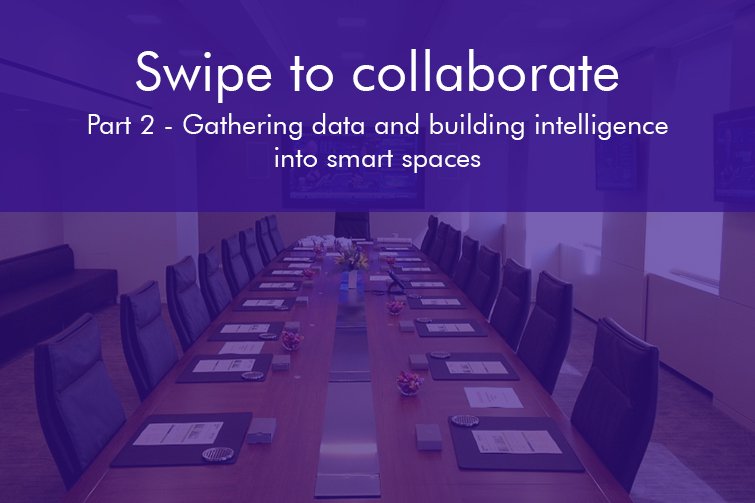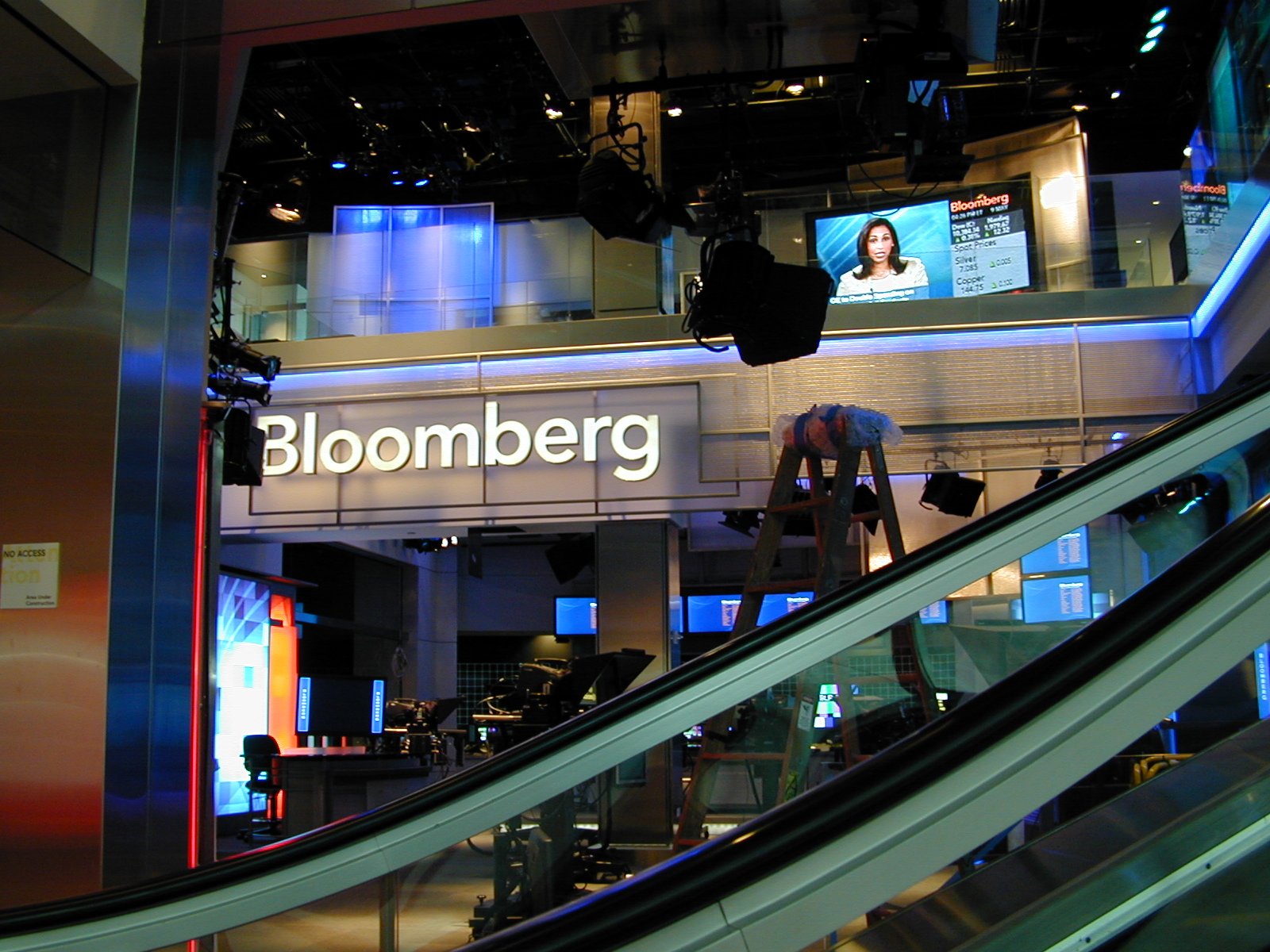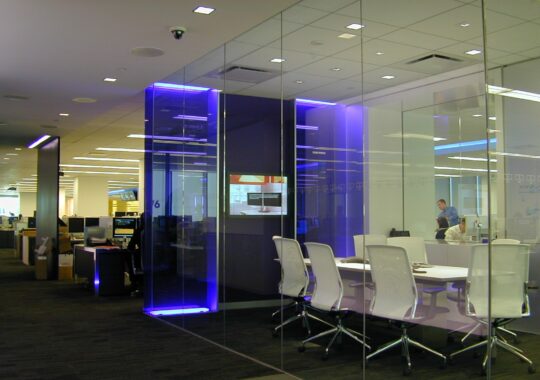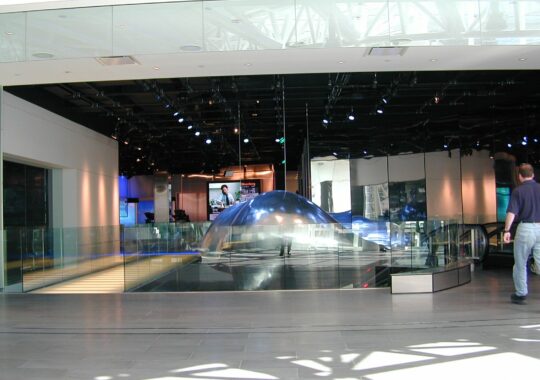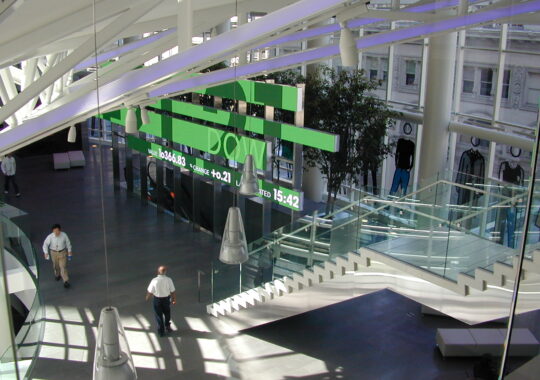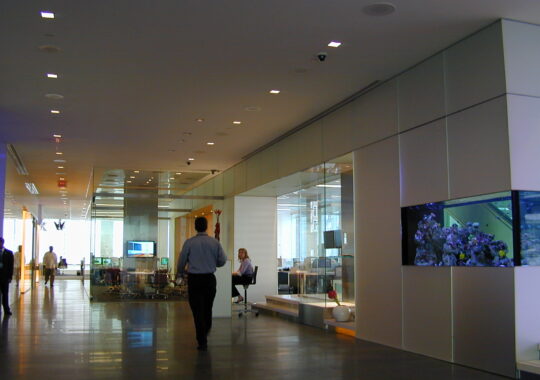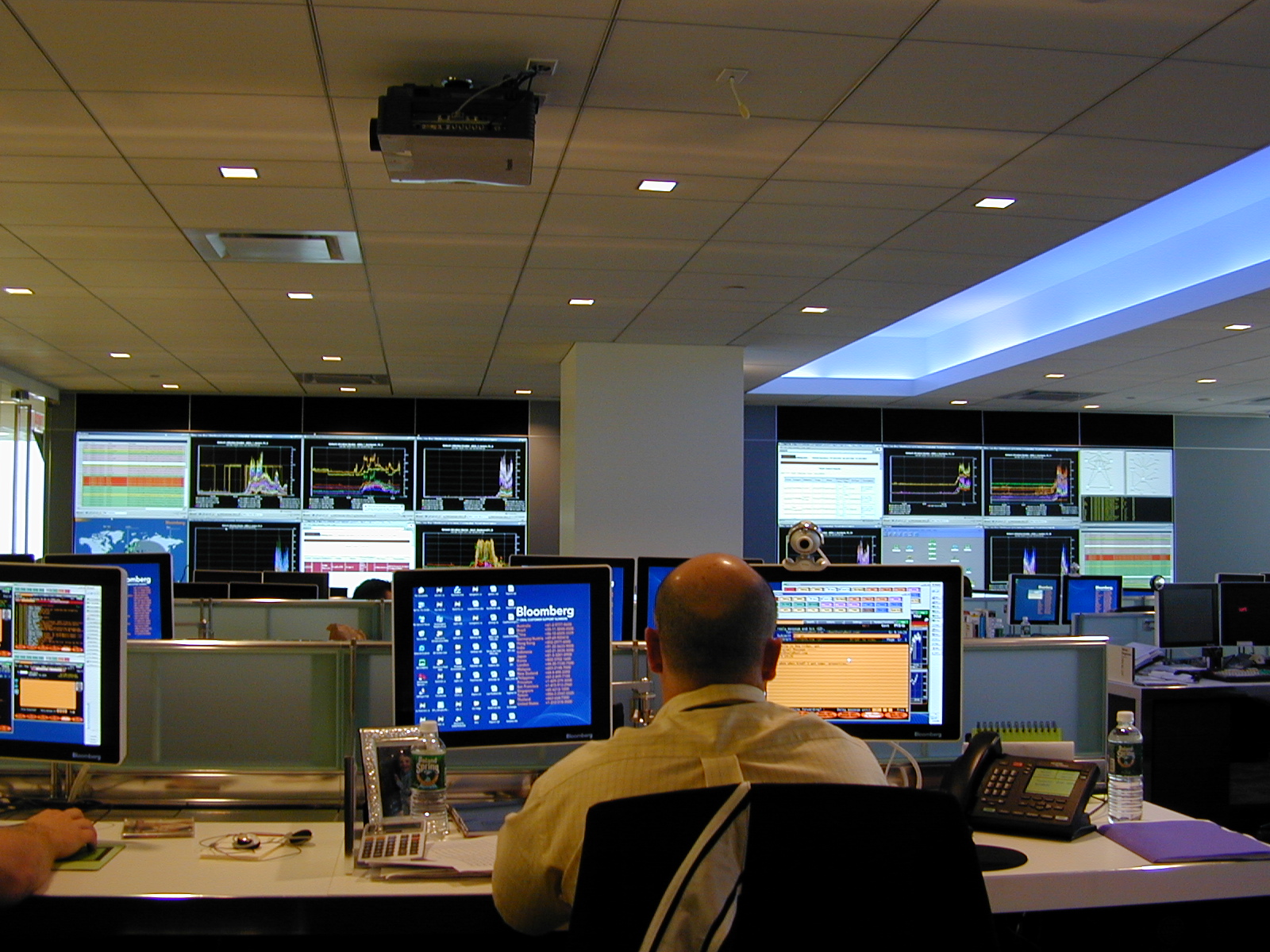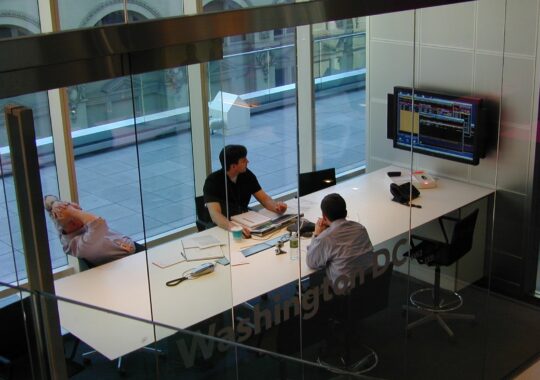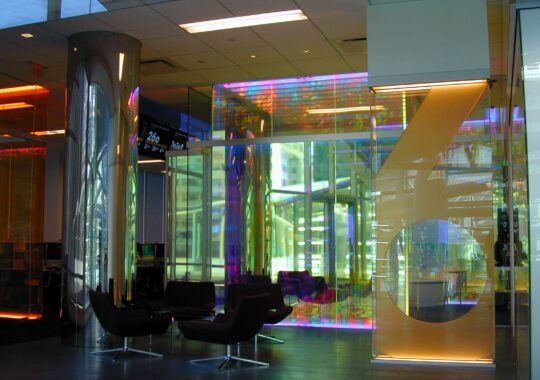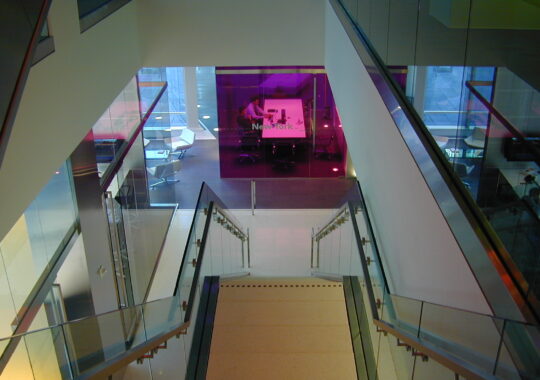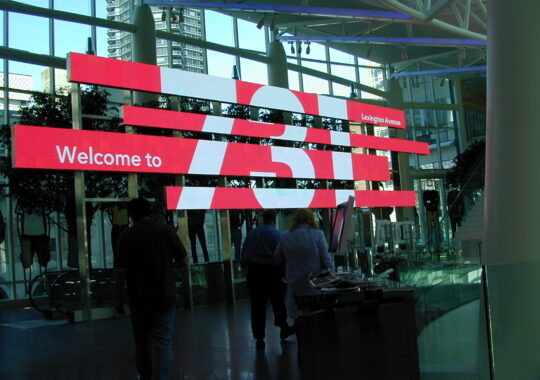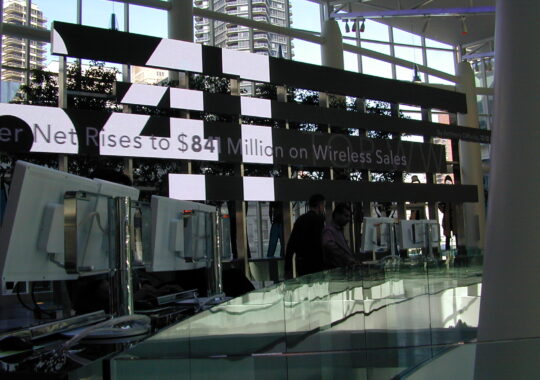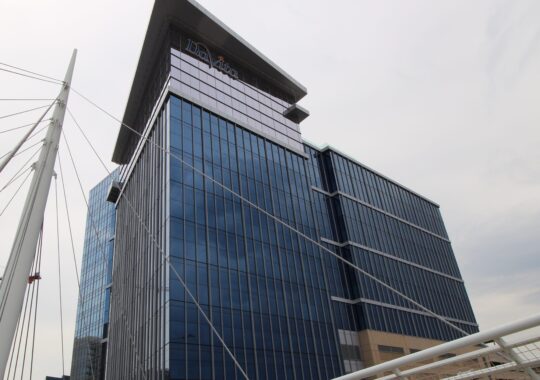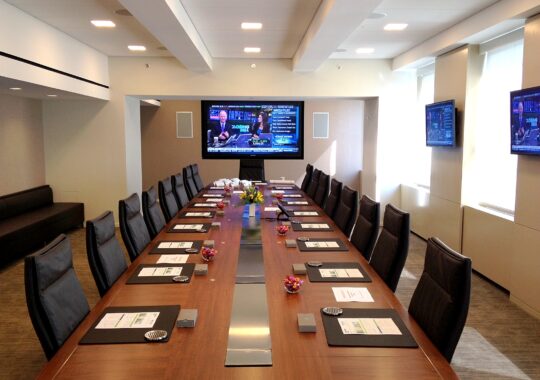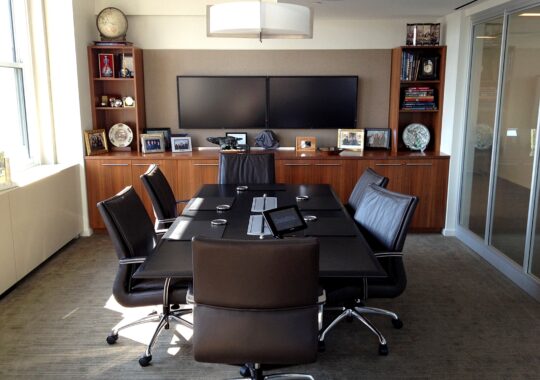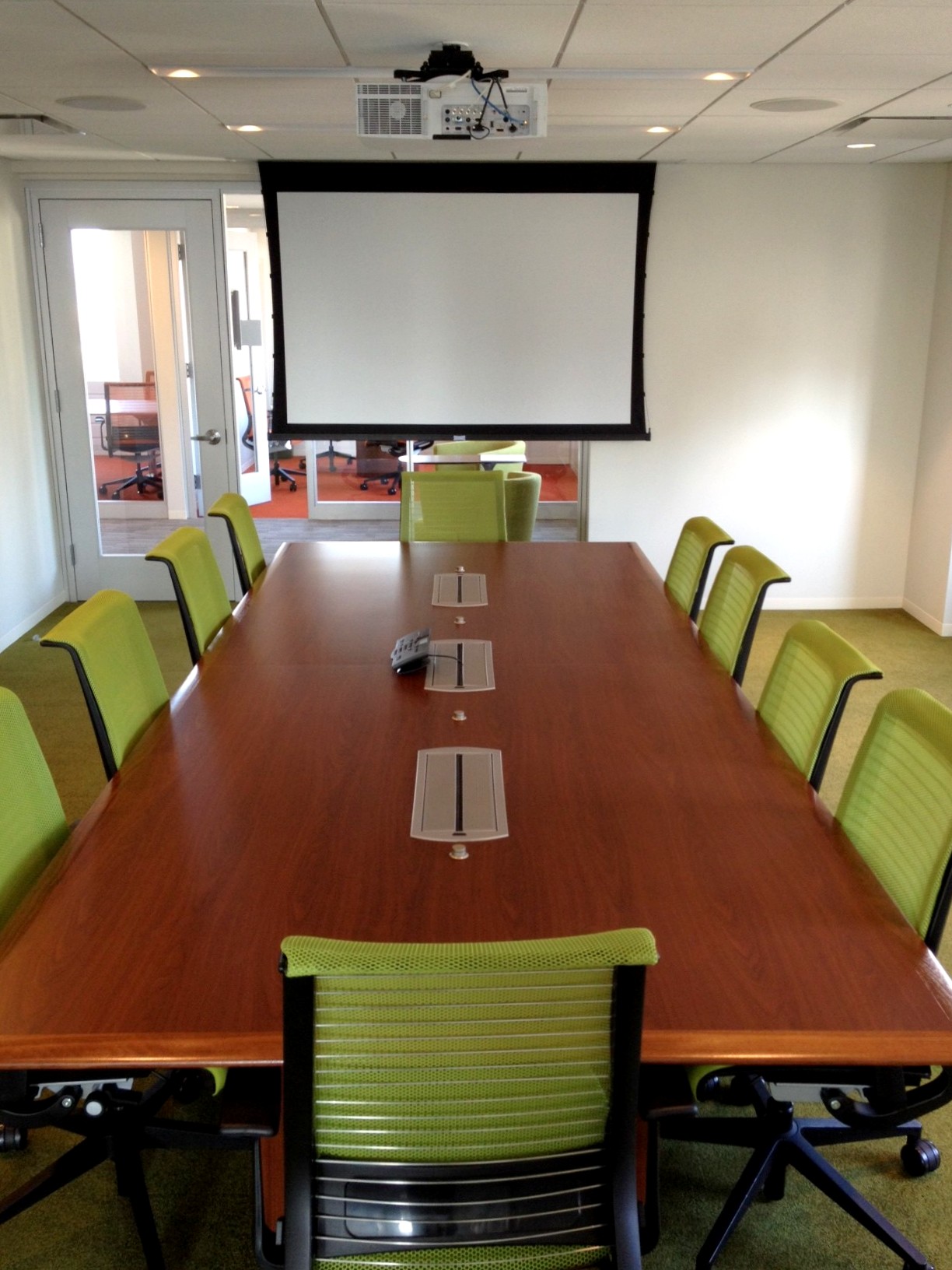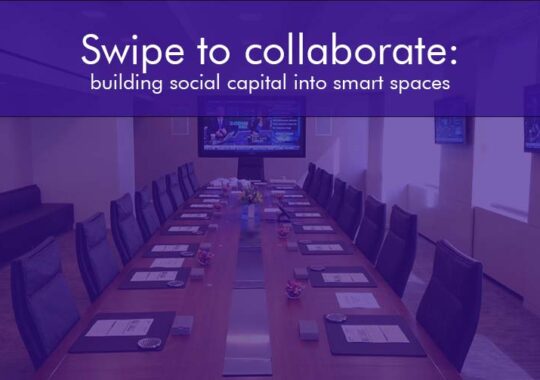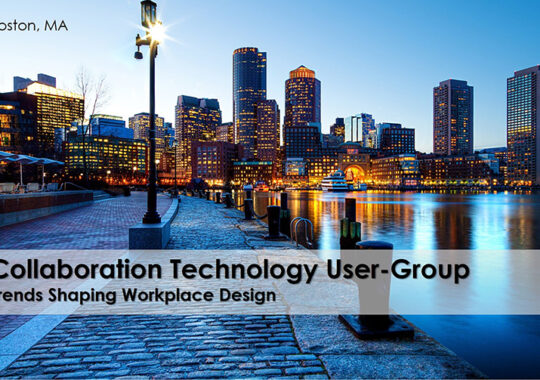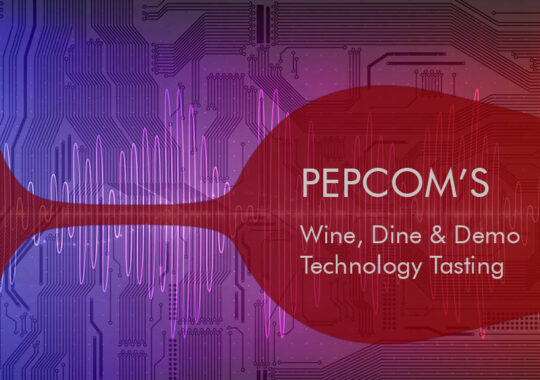Gathering data and building intelligence into smart spaces
The balancing act of tracking user activity
The reality is retailers have been tracking mobile subscriber identities for years. As customers move between sensors, the movements of their smartphones are monitored without owners ever logging into the store’s Wi-Fi (Stark, 2013). Thermal tracking and cameras also monitor customer behaviors. Companies like Prism Skylabs provide shopping analytics in the form of real-time video heatmaps that show where customers walk, even what items they stop to pick up (Griswold, 2014).
Concerns regarding tracking users came to light in 2013, when Renew’s trash receptacles began registering the unique [MAC] address of smartphones as London pedestrians passed by. More than four million devices were tracked in one month using just 12 trash cans, gathering insight into where people walked, how long they stood and where they worked (Stark, 2013), allowing Renew to predict where people will eat, drink and litter. The goal was commendable, but the outcry over privacy rights forced city officials to pull the program (Associated Press, 2013), which could be why New York City now provides free Wi-Fi with their smart trash cans (Harrington, 2015).
The hard lesson learned: organizations need to provide service enhancements in exchange for gathering personal information, and when they engage the population in the data collection process, the results are more accurate and relevant.
Heat Mapping and intelligent tracking technology applied to office spaces
Workplace management consultants are using heat mapping to help companies optimize their real-estate foot prints. Occupancy sensors and interactive dashboards are replacing informal surveys and pie charts. We now track, measure, and analyze entire facilities in real time, down to individual workstations (Asure, 2016).
It’s not surprising that the pressure is on to improve the use of space and reduce expenses, but it’s important to track the right data. Tracking can either turn attention to the wrong areas that need improvement or towards the right metrics that can increase innovation (Morley, 2016). Witness the reaction of the shrinking feet-per-desk and space plans derived from measuring density rather than daily peak utilization by space. That’s why tracking what merchandise people touch in a store illustrates the potential of going one step further than what facilities planners do today: by knowing how people prefer to interact with technology, we can design more effective collaboration spaces.
The real challenge is making contextual analysis of the gathered data. The intersection of people, place and technology is not easily extracted, and once derived the concluding results are unique. A successful workplace strategy for one company will not achieve the same results for another, so the painstaking process starts over. To address this challenge, users need to become active participants in the measurement process. If we start monitoring behaviors of employees, however, it’s likely to raise concerns about how the data is used unless the result provides tangible productivity enhancements.
So, the success of a people tracking initiative requires focusing on employee productivity as well as facilities management. Retailers already know the value of an engaged consumer. Lighting companies are installing smart fixtures that act as a positioning grid, providing shoppers with location-based services and pushing notifications to their smart phones (Philips, 2014). Walmart now has a more personalized relationship with their customers after using push notifications, tapping their data in return for store discounts (Mofluid, 2015).
Corporate offices are just beginning to appreciate the value people tracking, which is influencing both capture technology and data integration, demanding new levels of accuracy and immediacy. For example, monitoring complex retailing queues used to require 3D stereo video surveillance cameras because they provided height, mass, speed and direction (Max, 2015), but can now be derived from shoppers smart phones. Technology once used to navigate grocery aisles is now being used by companies like JibeStream to help employees find the nearest hot desk.
Google’s project Tango and Pokémon Go are examples of how 3D scanning, indoor navigation applications of motion sensors, and machine learning algorithms allow devices to learn how objects are oriented and provide tangible consumer benefits. The same intelligence and location analytics can improve the way we engage with technology in business spaces, but we tend to leave collaboration utilization analysis to IT engineers. If we just go a few steps further in our workplace analytics and integrate with everything we touch, we can unify these physical and information ecosystems.
Complexities
Our collaboration spaces can be as intelligent as today’s trash cans and smart phones provided there is an appetite for the investment. Nissan demonstrated that its self-driving car technology can be applied to robotic conference room and office chairs, by adding camera tracking and Wi-Fi control. Clapping and having chairs roll back to their original position addresses a common problem in conference rooms, but it’s expensive and does not help people use technology more effectively.
We could install hundreds of occupancy sensors or robotic chairs in our office spaces, but just like empowering the shopper, increasing office productivity occurs when both the collaborator and the facilities managers are empowered. To achieve this objective, we need effective tracking systems, that we can stack on top enablement services, such as room reservation systems and identity-based automations.
Bluetooth beacons are powerful, but we can’t count on people turning Bluetooth on since an average of 67% of users keep it off (Empatika, 2016). Wi-Fi is more likely to be active on the phone, but building expansive Wi-Fi signal distribution is expensive, and we may need to strip the user’s identity if we plan on sending the data to a third party to perform the analytics.
A recent innovation is to use geo-fencing at the facility parameters, since that does not require installing beacons out on the street. The business receives notifications when users enter or exit the region’s “fence”, and responds to a user’s off-state, nudging them to turn Bluetooth on once inside. Unfortunately, neither Bluetooth or Wi-Fi is sufficiently accurate once the user steps inside the collaboration space. Combining a cameras with Wi-Fi, however, can increase identity accuracy by overcoming blind spots and occultation (Van de Berghe, Weyn, Spruyt, and Ledda, 2011).
Building Smarter Collaboration Spaces
Automated Preferences
Just as quickly as physical phones are disappearing from desks, unified collaboration has to expand to a unified office experience. A wireless headset docking station like the Jabra Motion Office provides all voice and video calls through the computer. Since the individual’s identity is registered through software, we find employees by looking up their name, not their location, and they are free to roam the office to find an available collaboration space so they can swipe their mobile content up on to the screen.
Seamless infrastructure interface and compatibility
Walk up to a collaboration station, or enter a conference room, and automation is already working in the background. The room’s occupancy sensor activates shades, adjusts the lighting and counts usage. Visitor parking reservations, security access and catering are already integrated into today’s sophisticated calendaring systems. Whether using card readers or a keyboard, when the person’s identity matches the conference reservation, personalized welcome screen guides the use of technology, including access codes for wireless sharing. Upon leaving, the room knows it’s vacant and everything resets or powers down to save energy.
Let’s tap into this business intelligence. Based on the user’s previous actions, and accumulated reference of all previous conference room usage, we can predict the exact technology configuration that any individual about to use. Prompts based last use is much more efficient than selecting from a multitude of options on a touch panel. Designed in this manner, control systems can function like a driverless car, and its prediction accuracy will continuously improve.
If we want to optimize the conferencing experience, the physical and digital environments must align to support collaboration. On one hand, we present the room’s availability in real time, and self-configure the room’s technology at the start and end of meetings. On the other, using collaboration software, we automatically pull meeting attendees together, both physically and virtually, and give content persistence so that it’s retrievable outside of any session. Today, however, these automations exist in separate universes.
Enhanced Data, Improved Planning
The ultimate objective is not getting people into meeting rooms faster, but rather getting to the data faster, and with IoT and cloud storage, the needed information could exist anywhere. Today, we use the employee’s identity to launch a Skype call with a single button press. Tomorrow, deeper analytics will make accurate correlations on what individuals want in terms of business documents. Soon, voice recognition will simplify the process of accessing networked resources and expedite team interactions. Apple, Amazon, Google, Microsoft and even Facebook are all developing intelligent virtual assistant applications. If the most sophisticated companies on the planet are all investing in voice recognition technology, we should expect business applications follow very soon, and be prepared for this technology in our corporate spaces.
A verbal request for specific sales metrics could find the original and relevant sources and display the results faster than one can type the query on a keyboard. The faster data flows, the sooner analytic engines are fueled and informed business decisions occur. Voice activation can even automate a workflow that protects sensitive data without traditional login impediments (Witeck, 2016), but there’s work to be done. To predict whether this type of innovation will provide value worthy of its investment in cost, time and user training, we need to understand the business’s workflow. Thus, the process of improving the meeting experience starts by expanding a company’s workplace behavioral analytics to include the technologies used inside collaboration spaces.
Summary
The office space is a living organism that thrives on workflow analytics. Once we establish a solid tacking foundation, smart spaces driven by situational awareness can combine the best of physical and digital collaboration and achieve the collaboration strategist’s objective: a rich experience for local and virtual teams, switching between IM, voice and video, sharing files, screens and apps from any device, without wires and between teams located across the globe.
References
• Asure (2016). Workplace utilization and occupancy sensors. Retrieved from http://www.asuresoftware.com/product-lineup/utilization-occupancy-sensors/
• Associated Press (2013). Tracking people from trash-can sensors banned in London. Denver Post. Retrieved from http://www.denverpost.com/2013/08/12/tracking-people-from-trash-can-sensors-banned-in-london/
• Empatika (2016). iBeacon: Is Bluetooth On? Retrieved from http://beekn.net/2014/03/ibeacon-bluetooth-insights-empatika/
• Griswold, A. (2014). These heat maps show how retailers track you as you shop. Business Insider. Retrieved from http://www.businessinsider.com/how-retailers-track-shoppers-in-heat-maps-2014-1
• Harrington, R. (2015). New York’s garbage cans will turn into Wi-Fi hotspots. Retrieved from http://www.popsci.com/garbage-cans-are-new-wi-fi-hotspot
• JibeStream (2016). How Way-finding software keeps meetings starting on time. Retrieved from http://www.jibestream.com/blog/how-wayfinding-software-keeps-meetings-starting-on-time
• Max, R. (2015). 7 Technologies that track people. Behavior Analytics in Retail. Retrieved from http://www.behavioranalyticsretail.com/7-technologies-to-track-people/
• Mofluid, 2015. How Wal-Mart leveraged push notification to increase sales. Retrieved from https://mofluid.com/blog/how-wal-mart-leveraged-push-notification-to-increase-sales/
• Morley, I. (2016), The new workplace space utilization metrics you need to know about. Retrieved from http://www.serraview.com/the-new-workplace-space-utilization-metrics-you-need-to-know-about/
• Philips (2014). Where is the guacamole? Don’t worry, Philips’ supermarket lighting will tell you! Retrieved from http://www.philips.com/a-w/about/news/archive/standard/news/press/2014/20140217-Intelligent-in-store-LED-lighting-communicates-with-your-smartphone.html
• Stark, J. (2013). Tracked from the moment you wake. The Sydney Morning Herald. Retrieved from http://www.smh.com.au/digital-life/tracked-from-the-moment-you-wake-20130823-2shwq.html
• Van de Berghe, S., Weyn, M., Spruyt, V., Ledda, A. (2011), Fusing camera and Wi-fi sensors for opportunistic localization. UBICOMM 2011. IARIA. Retrieved from https://www.thinkmind.org/download.php?articleid=ubicomm_2011_9_10_10132
• Witeck, C. (2016), Intelligent spaces: digital transformation gets physical with HPE & Citrix. Citrix. Retrieved from https://www.citrix.com/blogs/2016/06/06/intelligent-spaces-digital-transformation-gets-physical-with-hpe-citrix/
